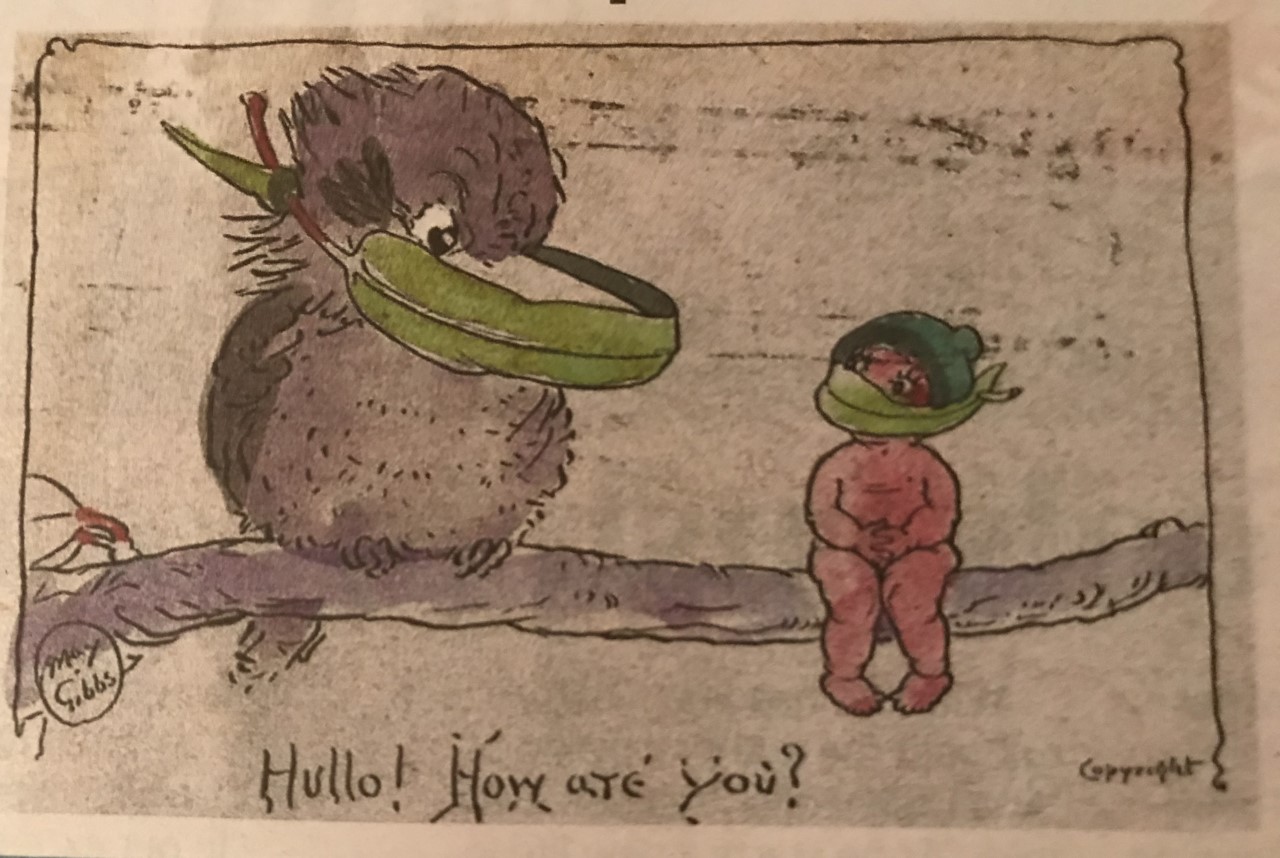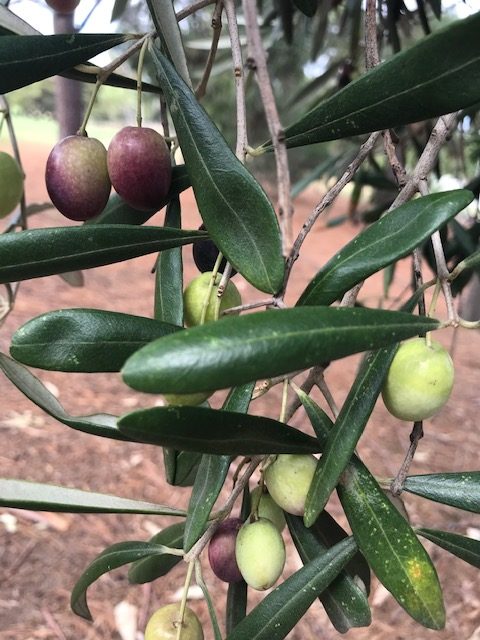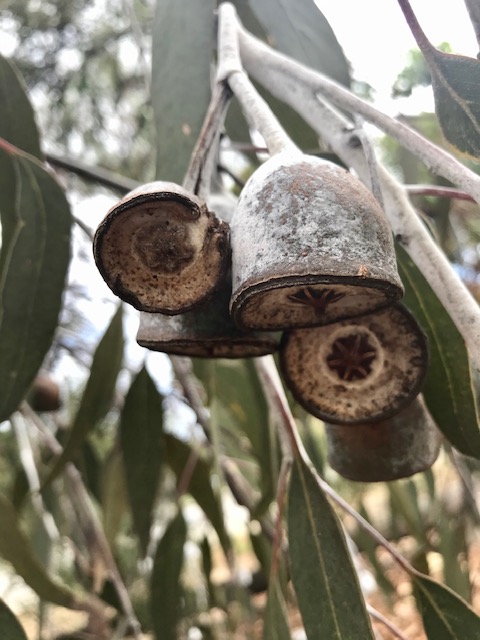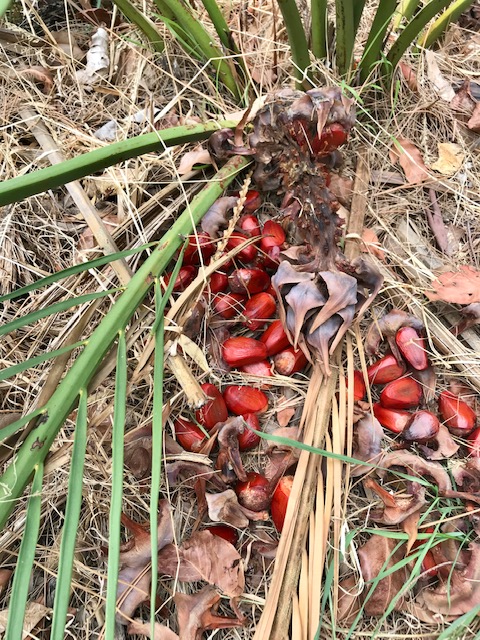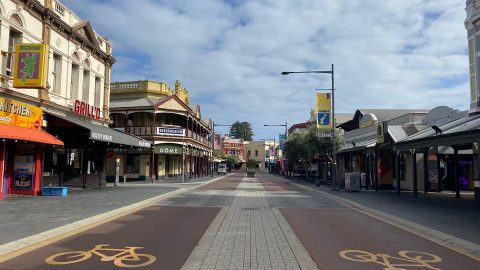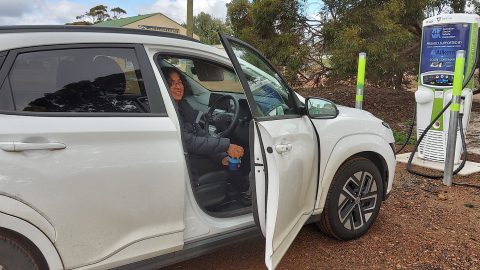Whatever you’ve been doing this Easter weekend, I’m guessing it’s not what you would have guessed a month ago. While families walk and cycle around my neighbourhood searching for Teddies and Easter Bunnies in windows and gardens – I head off the beaten track. I’ve discovered new green spaces near to home that are teaming with new growth and wildlife.
It’s a beautiful time of year, warm April sun, cool evenings and a pink moon in the night sky. Djeran is the Aboriginal season from April to May. It is one of the six Nyoongar seasons. Djeran is a time of flowering gums, banksias and other plants. Seed pods form on sheoaks, the nectar providing food for bees, birds and small mammals.
In a nearby park, grass trees are in various stages of growth. Kalamata olives are ripening. Bees make a nest in a tree hollow and birds sing and dart about.
Gumnuts are bursting into pink flowers. When I look at these blossoming gumnuts I always think of the lovable bush characters, Snugglepot and Cuddlepie, the inquisitive little gumnut babies created by Australian author May Gibbs.
One hundred years ago, during the Spanish Flu Pandemic, May Gibbs drew a picture of a kookaburra and a gumnut baby wearing eucalypt leaves as masks with the caption “Hullo, how are you? In 1919, between 20 and 50 million died worldwide from the Spanish Flu. People were ordered to wear masks to prevent the spread.
And now, a hundred years later, gumnuts continue to blossom and nature is flourishing. As Coronavirus puts the world into lockdown, wildlife is having a wonderful break from pollution, cars and humans. Herds of deer have moved onto the green areas of housing estates in East London. Wild goats have taken over the Welsh seaside town of Llandudno. Herds of cattle and wild horses are enjoying empty beaches and a fox was seen on the deserted Ha’penny Bridge in the centre of Dublin City. There are wild boars in Barcelona and monkeys are over-running parts of Thailand.
In my neighbourhood, there is much more birdlife: 2 ibis have taken up residence in the nearby green, a flock of Carnaby cockatoos raided a nearby pine tree, pink and grey galahs strut their stuff up and down the street. I’ve seen a boobook owl and several blue-tongued lizards. ‘Wildlife in Suburbia’ has taken on a whole new meaning.
I look forward to my early morning walks while the dew is still on the grass and the day is cool. I much prefer the rustle of leaves to the hum of traffic.
Most of us know the benefits of being in nature. Being in nature is calming and helps us to relax. In Japan, Shinrin-yoka or forest bathing is a well-established practice since the 1980s. It has spread to other parts of Asia and Europe. This form of nature therapy encourages people to spend time in the forest and under a canopy of trees. The practice is believed to have calming, rejuvenating and restorative effects on the mind, body and soul.
If you are in isolation and unable to leave home and have no garden, you can take a stroll in the wild with nature writer Jon Mooallem via Walking, his podcast – it is full of ambient noise: footsteps, birdsong, and rustling leaves.
For those of us who can leave home to exercise, how lucky are we to live around Fremantle with so many parks and green spaces?
Instead of rushing around during the Easter break, perhaps take time to explore close to home.
